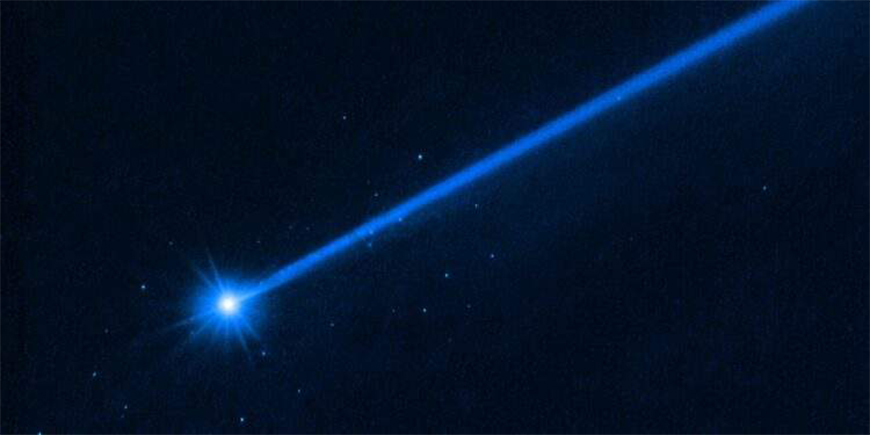Hubble spotted 37 small rock fragments ejected from the asteroid Dimorphos after the impact of the Dart probe.
On 26 September 2022 (27 September UK time), NASA attempted an unprecedented feat: the deliberate alteration of an asteroid’s orbit. In this first-ever planetary defence test, the DART spacecraft crashed into the asteroid Dimorphos at about 24,000 km/h, slightly altering its orbit around the larger asteroid Didymos.
The test was a success, as evidenced by the extraordinary images taken by the Dart probe before the crash.
The Hubble images
Nasa and the European Space Agency‘s Hubble Space Telescope continued to monitor the asteroid’s changes after the mission, and managed to see and capture 37 small rock fragments ejected from Dimorphos after the violent impact.
Professor David Jewitt of the University of California, Los Angeles, and lead author of a paper published in The Astrophysical Journal Letters examining the Hubble data, said the impact not only produced a cloud of dust but also “kicked up a swarm of boulders that carried mass and energy away from the impact target“.
The 37 ejected boulders range in size from 1 metre to 6.7 metres across, based on Hubble photometry. They are drifting away from the asteroid at around one kilometre per hour. The total mass in these detected boulders is about 0.1% the mass of Dimorphos. The boulders are some of the faintest objects ever imaged in the Solar System.
Where the Dimorphos boulders come from
The boulders are most likely not shattered pieces of the diminutive asteroid caused by the impact. They were already scattered across the asteroid’s surface, and the Dart spacecraft merely helped to disperse them in space.
The main evidence for this hypothesis comes from the last close-up images taken by the DART spacecraft just two seconds before collision, when it was only 11 kilometres above the surface. These images show that the asteroid was already covered by numerous boulders of a size compatible with those photographed by Hubble. According to the formation models, Dimorphos would be a a flying rubble pile of rocky debris loosely held together by the relatively weak pull of its gravity. Therefore, the interior is probably not solid, but has a structure more like a bunch of grapes.

It’s not clear how the boulders were lifted off the asteroid’s surface. They could be part of an ejecta plume that was photographed by Hubble and other observatories. Or a seismic wave from the impact may have rattled through the asteroid — like hitting a bell with a hammer — shaking loose the surface rubble.
The team estimated that 2% of the boulders on the surface were released into space after the crash.
Upcoming missions
Jewitt and his colleagues have used Hubble to track changes in Dimorphos both during and after the DART impact, but another mission will take an even closer look.
The European Space Agency’s Hera mission is set to launch in 2024. Hera will study both asteroids, measure physical properties of Dimorphos, and examine the DART impact crater and the moon’s orbit, with the aim of establishing an effective planetary defense strategy.
“The boulder cloud will still be dispersing when Hera arrives,” Jewitt said. “It’s like a very slowly expanding swarm of bees that eventually will spread along the binary pair’s orbit around the Sun. If we follow the boulders in future observations, we may have enough data to define the precise trajectories of the boulders. And then we will be able to see in which directions they were thrown from the surface. “
Read more
Sources and Data
- Hubble Sees Boulders Escaping from Asteroid Dimorphos – NASA
- The Dimorphos Boulder Swarm – David Jewitt, Yoonyoung Kim, Jing Li, and Max Mutchler
- NASA Marshall – Twitter
- Hubble ha trovato una nuvola di 37 massi espulsi dall’asteroide Dimorphos – Astrospace.it
- Hubble vede i pezzi distaccati dell’asteroide Dimorphos dopo l’impatto con la sonda DART – Passioneastronomia.it


